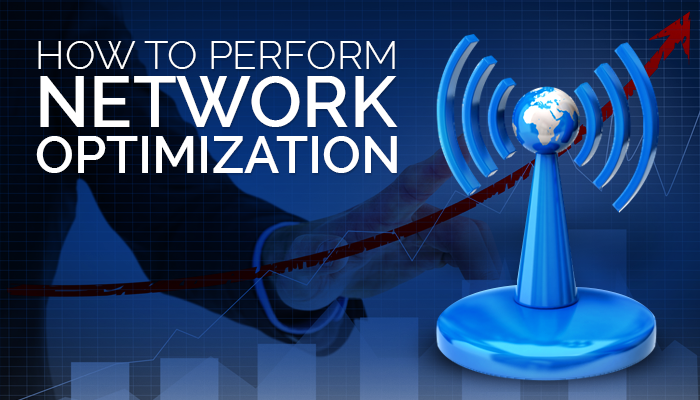how to perform network optimization
Evaluating Your Network: How to Optimize Performance and Ensure Consistent, Secure Operation
Assess your Networking Needs
Understanding what your network is designed to do is the most important step in optimizing network performance. It’s the groundwork that everything else is built upon, and even when working on an already existing network this is a critical step to ensuring smooth operation.
- What is this network used for?
- What kind of bandwidth is needed?
- What kind of hardware will help achieve this data-transfer target?
- How is the network’s topology separated?
- How many devices do I need for this topology?
- What kind of redundancy will be in place?

Analyze the Network
After answering the above questions, it’s time to look at the network itself, both at a hardware and software level. Begin by locating the network’s topology map to get a firm grasp on how everything fits together. Too often, networks are implemented without any map at all, which will eventually cause problems down the line. If one isn’t already drawn up, create one.
Go through each device and make sure it’s using proper cabling that is able to handle the tasks given to it. Most slowdowns are going to occur at the Network layer, but a little time spent ruling out obvious Physical layer issues will help with future troubleshooting.
On the same token, old devices should be checked for old or outdated firmware. Having the latest-and-greatest firmware isn’t always necessary, but having archaic firmware that lacks features needed to fit into the network can create critical issues that need to be fixed immediately.
Evaluate Bottlenecks
This is where a topology map will really help create a smoothly operating network. Are there times of the day where an overwhelming amount of traffic will be going through a single device? Consider those devices capabilities and decide if more hardware or a more balanced topology is needed. If there’s a particular time when an area of high network traffic is guaranteed, it may help to limit data on low-traffic connections in order to free up bandwidth for those more congested connections. Most enterprise-grade equipment manufacturers offer robust QoS tools to aid in this.
Additional software can also help nail down areas of your network where slowdowns are affecting performance. There are a number of developers who offer tools to trace packets across the network and run stress tests to see where things begin to fall apart. Find these areas and assess what solution is needed to ensure traffic continues to flow even during intensive data use. A surprising number of network slowdowns can be fixed with simple changes to routing tables to ensure data is being sent on the best path through the network.
